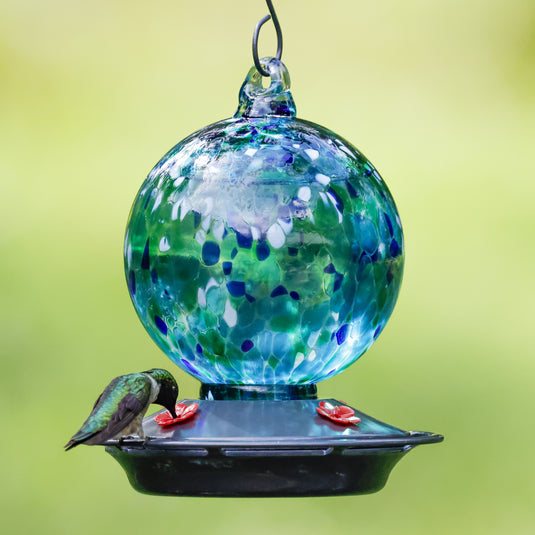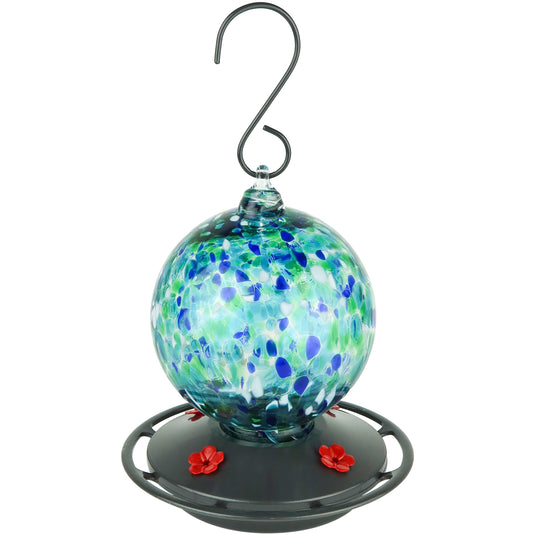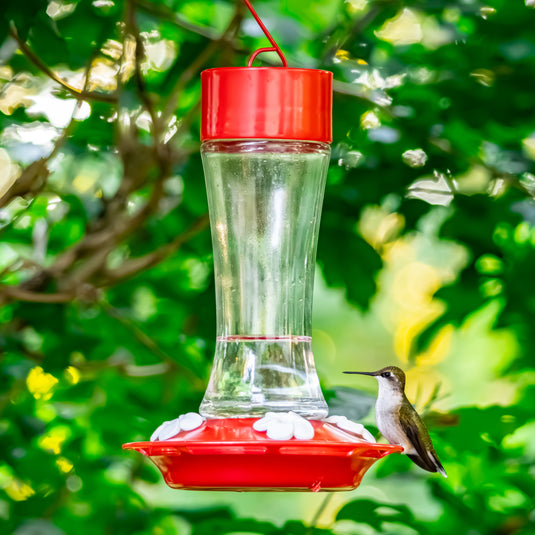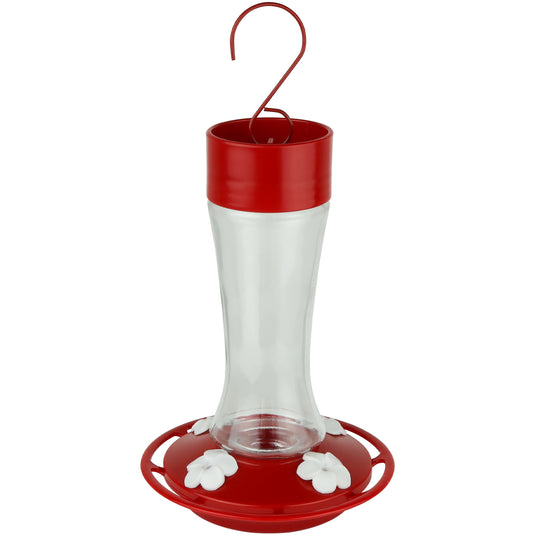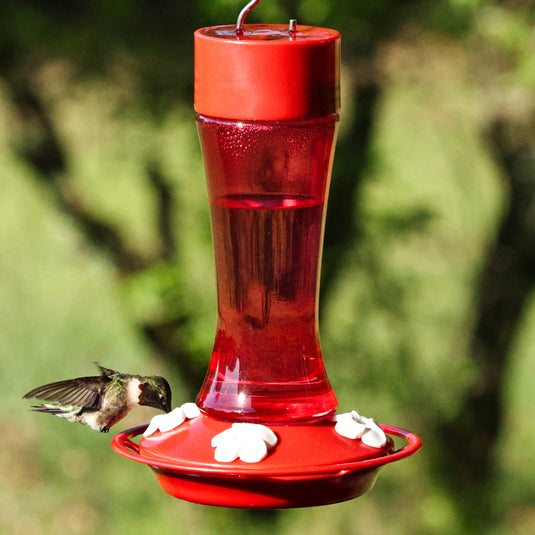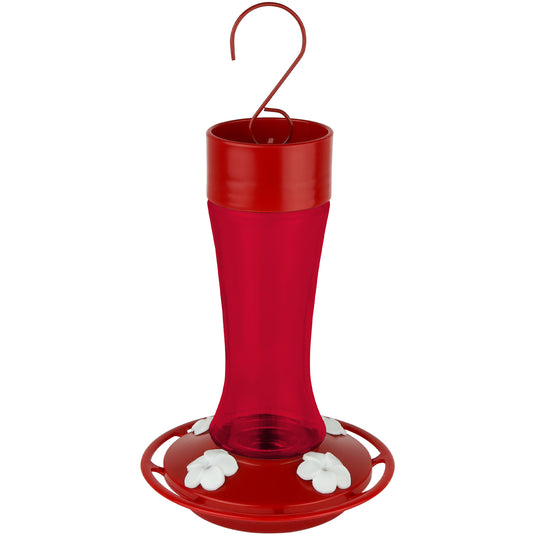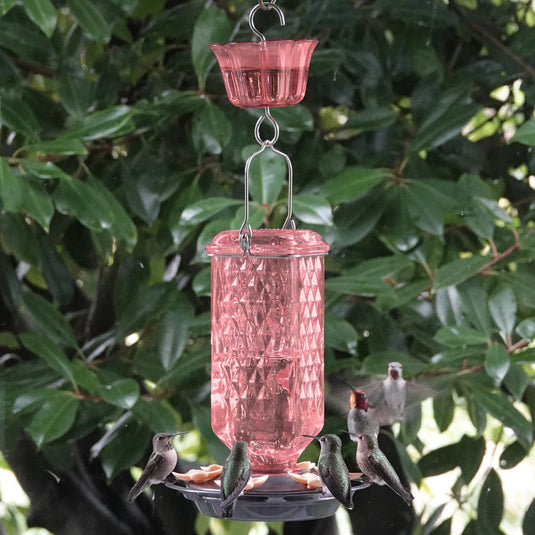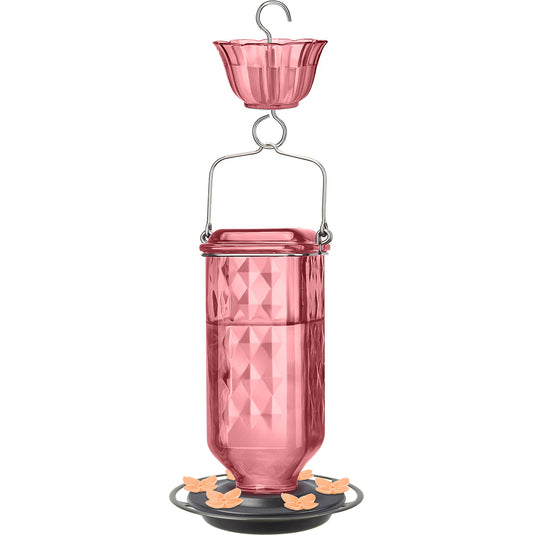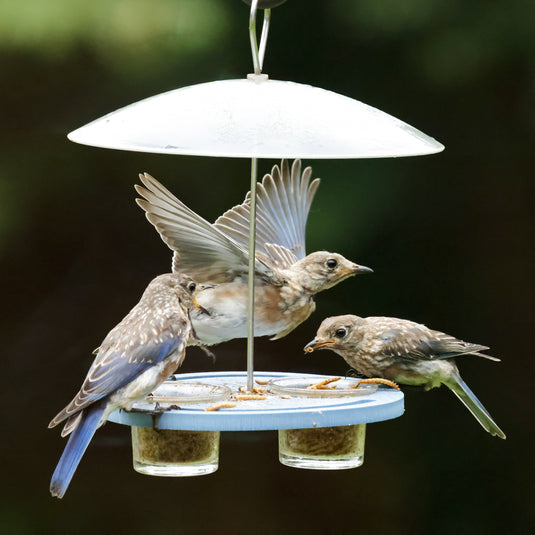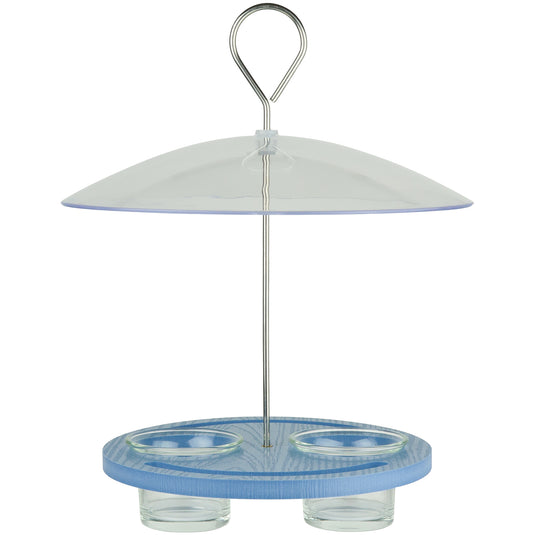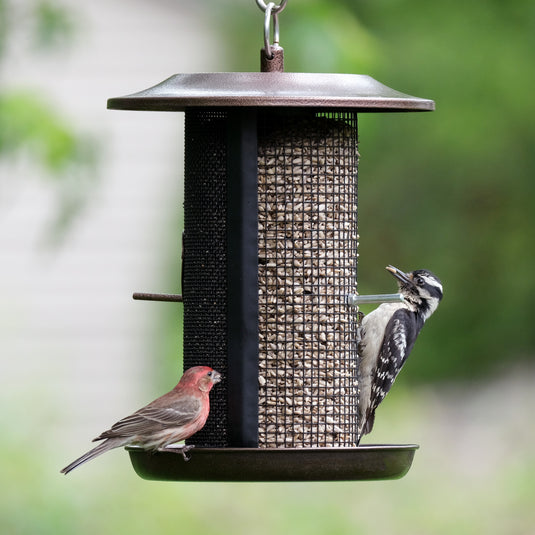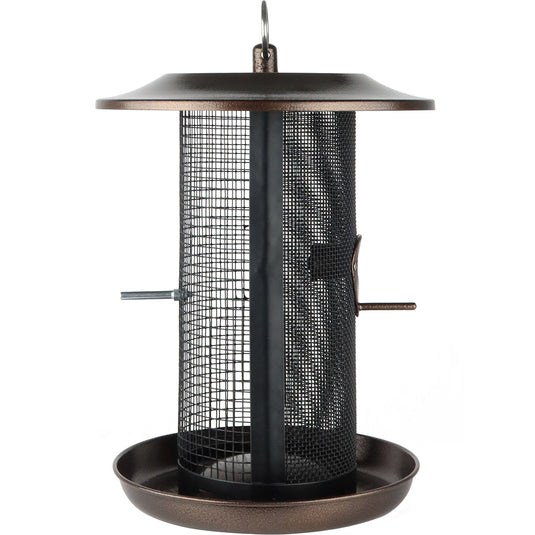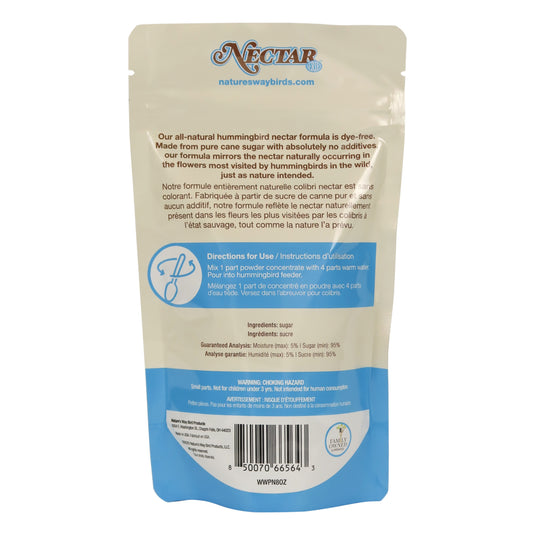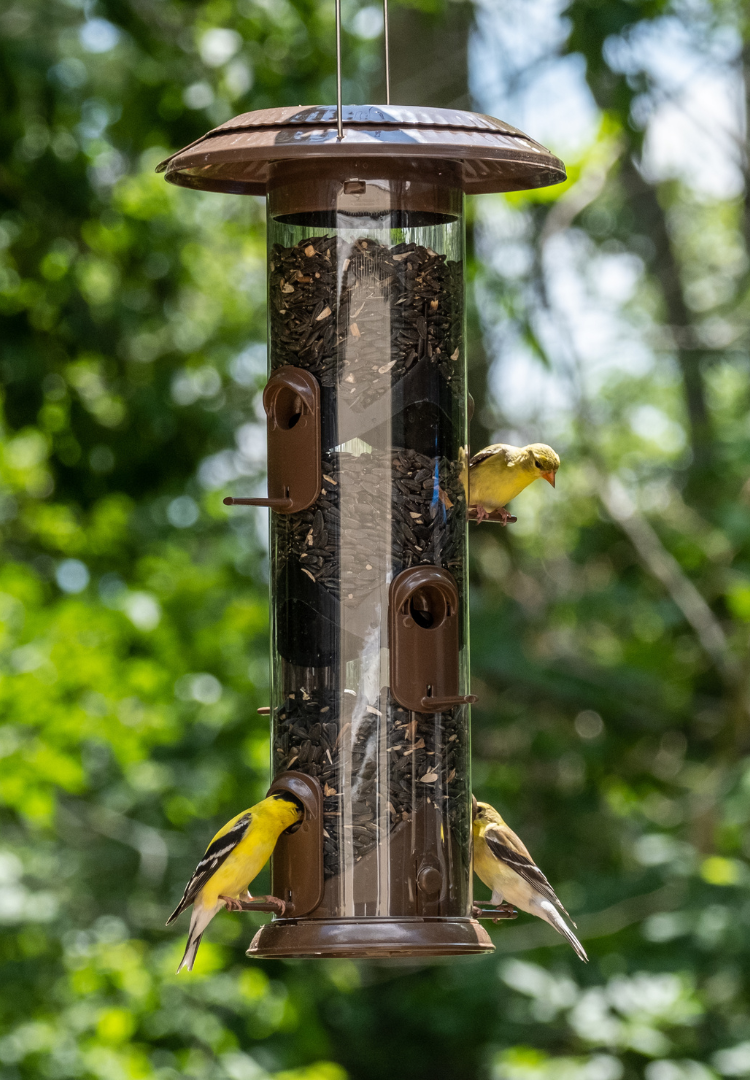Identifying Hairy Woodpeckers:
Ranging from 7 to 10 inches in length and featuring a long straight, chisel-like bill roughly the same length as its head, the Hairy Woodpecker has a very standard woodpecker build with a square head and long stiff tail used for propping against tree trunks. Both males and females have a white underside, black upper wing and checkered lower wings with a boldly striped face and white stripe down the center of the back. The center of the tail is black, outlined by white border feathers. Males are easily differentiated by a flashy red patch towards the back of their heads.
Hairy Woodpeckers have a wide territory where they remain year-round encompassing most of the United States and Canada. Birds residing in northern territories tend to be larger than their southern counterparts. While western birds have much less spotting in the wings and narrower facial stripes, birds East of the Rocky Mountains are predominately white below with extensively contrasting spotted wings. Birds in the Pacific Northwest are a faint brown and black; giving off a coffee-stained appearance.


Left: Female Hairy Woodpecker. Right: Male Hairy Woodpecker
Attracting Hairy Woodpeckers to Your Feeder:
Hairy Woodpeckers most often take residence in mature forests, though they’re also found in woodlots, parks, and suburbs, as well as forest edges and open woodlands. As with other woodpeckers and insect eating birds, suet is a safe bet when trying to attract these checkered visitors. Suet feeders with extended bases provide space for these bottom-heavy birds to prop their tail for comfortable feeding, much like they would naturally on the trunk of a tree. Peanuts and black oil sunflower are also favorites of the Hairy Woodpecker. These can be fed in an open tray feeder for unimpeded bird viewing.
In summer months, it is not unusual to see Hairy Woodpeckers visiting Oriole feeders with grape jelly or even Hummingbird feeders with nectar.
Nesting:
Hairy Woodpeckers are cavity nesters and nest in dead trees or dying trees infected with a rot which makes the wood softer and easier to excavate. The cavity is often excavated in an angled branch with the entry hole positioned on the underside to deter other animals who may otherwise attempt to take over the space. When complete, the cavity will be 8-12 inches deep, widening toward the bottom and lined only with wood chips. Pairs will have 1 brood per year with an average clutch size of anywhere from 3-6 eggs.
Eggs are roughly 1 inch in length and 0.8 inches wide and are completely white. Eggs typically hatch within 12 days and the young will fledge in an additional 30 days.
Distinguishing between a Downy and Hairy Woodpecker:
Downy Woodpeckers are roughly two-thirds the size of Hairy Woodpeckers. Since this can be fairly hard to establish in the field, some birders use their feeders as indicator of size and scale. Another establishing feature of the Downy Woodpecker are distinguishable black bars on the white tail feathers in contrast to the all white side tail feathers of the Hairy Woodpecker. If the bird's bill is visible, the major difference in bill size. The Downy’s bill is roughly one-third the length of the bird’s head, while the Hairy’s bill is almost as long as its head - a railroad spike in comparison. An additional, less reliable distinguishing feature is that the male Hairy Woodpecker's red patch is often split in two, while the Downy’s is not.

Left: Hairy Woodpecker. Right: Downy Woodpecker. Illustrations from the book "A Field Guide to the birds" by Roger Tory Peterson.








